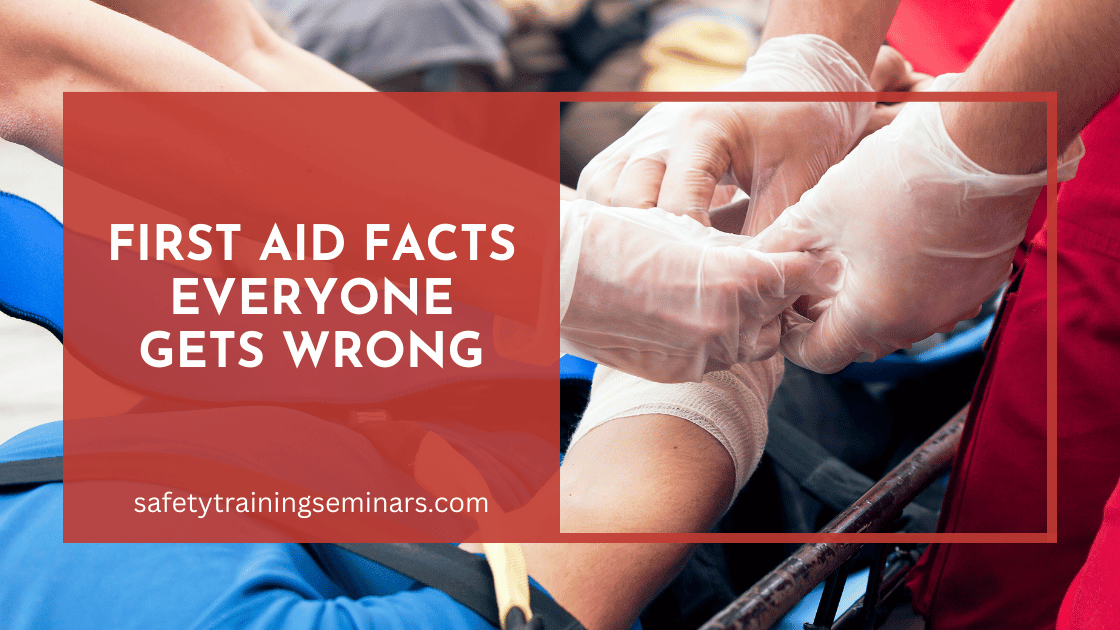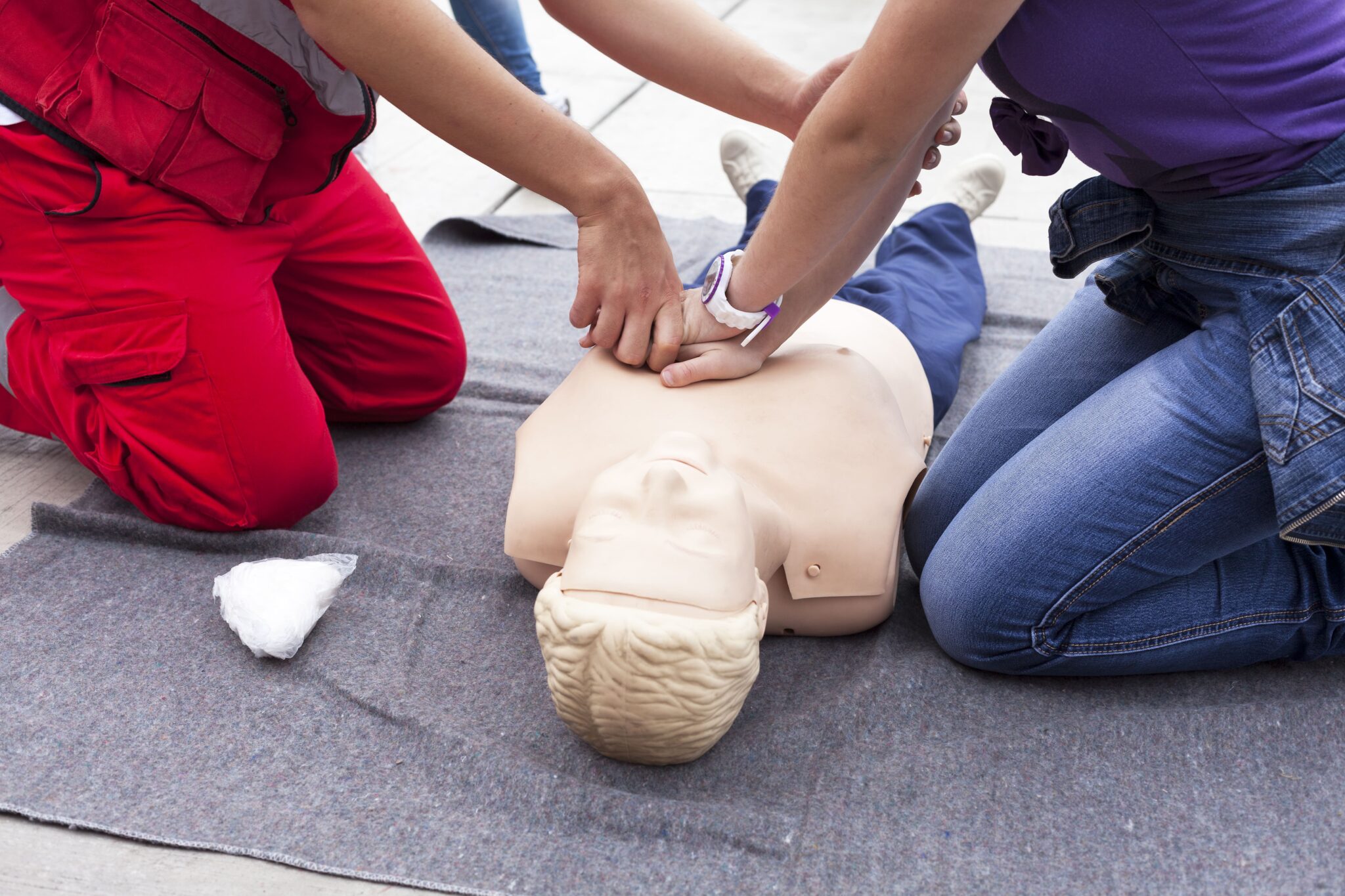You think you know first aid. But what if the “helpful” tips you learned are actually making things worse?
Common first aid myths spread faster than facts. From applying butter to burns to tilting heads back during nosebleeds, these misconceptions can turn a rescue attempt into a dangerous mistake. The truth is, many widely-believed first aid practices are outdated, ineffective, or downright harmful.
This guide will debunk the most dangerous first aid myths and show you the correct techniques that could save a life. You’ll learn why these myths persist, what science actually says, and how to respond properly in real emergencies.
Why First Aid Myths Are So Dangerous
First aid myths aren’t just wrong—they’re dangerous. When someone is injured or in distress, every second counts. Using outdated techniques can:
- Worsen the original injury
- Delay proper treatment
- Create new medical complications
- Reduce chances of recovery
These myths often sound logical. Butter seems soothing for burns. Tilting the head back seems like it would stop bleeding. But medical science has evolved, and what once seemed reasonable is now known to be harmful.
The biggest problem? These myths get passed down through generations. Your grandmother might have used butter on burns, so it seems trustworthy. But modern medicine has better solutions.
Burns: Stop Using Butter and Ice
The Myth: Butter, oil, or other greasy substances help treat burns.
The Reality: These substances trap heat against your skin, making the burn worse. They also increase infection risk and make it harder for medical professionals to assess the damage.
The Correct Method:
- Remove the person from the heat source immediately
- Run cool (not cold) water over the burn for 10-20 minutes
- Cover with a sterile, non-stick dressing
- Seek medical attention for severe burns
Another Common Mistake: Applying ice directly to burns.
Ice can damage already-injured skin tissue. The extreme cold can cause frostbite on top of the burn injury. Cool running water is much safer and more effective.
Nosebleeds: Don’t Tilt Your Head Back
The Myth: Tilting your head back stops nosebleeds.
The Reality: This sends blood down your throat, which can cause choking or nausea. You’re not stopping the bleeding—you’re just hiding it.
The Correct Method:
- Lean forward slightly
- Pinch the soft part of your nose (not the bridge)
- Hold for 10-15 minutes without checking
- Breathe through your mouth
- Seek medical help if bleeding doesn’t stop
Leaning forward lets blood drain out of your nose instead of down your throat. This prevents choking and lets you see when the bleeding actually stops.
Sprains and Fractures: Heat Makes Things Worse
The Myth: Heat helps with sprains and fractures.
The Reality: Heat increases blood flow, which worsens swelling and pain. This can slow healing and increase tissue damage.
The Correct Method: Use the RICE method:
- Rest: Don’t use the injured area
- Ice: Apply for 15-20 minutes every 2-3 hours for the first 48 hours
- Compression: Use elastic bandages (not too tight)
- Elevation: Raise the injured area above heart level when possible
Cold reduces swelling and numbs pain. Heat should only be used much later in the healing process, and only under medical guidance.
Bleeding: Tourniquets Aren’t Always the Answer
The Myth: Tourniquets are the best solution for deep wounds or snake bites.
The Reality: Tourniquets can cut off circulation completely, leading to tissue death. They’re only appropriate for severe limb injuries with massive bleeding.
The Correct Method:
- Apply direct pressure with a clean cloth
- Elevate the injured area if possible
- Add more bandages if blood soaks through (don’t remove the original)
- Call emergency services for severe bleeding
For snake bites specifically, tourniquets can make venom concentrate in one area, potentially causing more damage. Keep the bite area still and below heart level while seeking immediate medical care.
Seizures: Never Restrain Someone
The Myth: You should hold down someone having a seizure.
The Reality: Restraining can cause fractures, dislocations, or other injuries. You cannot stop a seizure by holding someone down.
The Correct Method:
- Clear the area of dangerous objects
- Place something soft under their head
- Turn them on their side if possible
- Time the seizure
- Call emergency services if it lasts longer than 5 minutes
Most seizures stop on their own within 2-3 minutes. Your job is to keep the person safe, not to stop the seizure.
Poisoning: Don’t Induce Vomiting
The Myth: Making someone vomit removes poison from their system.
The Reality: Some substances cause more damage coming back up. Corrosive chemicals can burn the throat and mouth again during vomiting.
The Correct Method:
- Call Poison Control immediately: 1-800-222-1222
- Follow their specific instructions
- Have the poison container ready for reference
- Don’t give anything by mouth unless instructed
Poison Control experts know which substances are safe to vomit and which aren’t. They can give you specific instructions based on the exact poison involved.
Fainting: Not Always an Emergency
The Myth: Fainting always means something serious is wrong.
The Reality: Fainting has many causes, from dehydration to standing up too quickly. Most fainting episodes aren’t life-threatening.
The Correct Method:
- Help the person lie down with legs elevated
- Check for breathing and responsiveness
- Loosen tight clothing
- Don’t give food or water until they’re fully alert
- Call for help if they don’t wake up within a few minutes
The key is determining whether this is simple fainting or something more serious. Signs of serious problems include chest pain, difficulty breathing, or prolonged unconsciousness.
CPR: You Don’t Need to Be a Professional
The Myth: Only trained professionals should perform CPR.
The Reality: Immediate CPR doubles or triples survival chances. Even imperfect CPR is better than no CPR.
The Correct Method:
- Call 911 immediately
- Place heel of one hand on center of chest
- Place other hand on top, interlacing fingers
- Push hard and fast at least 2 inches deep
- Let chest rise completely between compressions
- Aim for 100-120 compressions per minute
Don’t worry about rescue breathing if you’re not trained. Continuous chest compressions are the most important part of CPR.
Eye Injuries: Stop Rubbing
The Myth: Rubbing removes foreign objects from eyes.
The Reality: Rubbing can scratch the cornea or push objects deeper into the eye.
The Correct Method:
- Don’t rub or touch the eye
- Rinse gently with clean water
- Blink naturally to encourage tears
- Seek medical attention if object doesn’t come out
- Cover both eyes if object is large or embedded
For chemical splashes, flush continuously with water for at least 15 minutes while heading to the hospital.
First Aid Kits: More Than Emergency Supplies
The Myth: First aid kits are only for major emergencies.
The Reality: Most first aid kit use involves minor cuts, scrapes, and everyday injuries. Having supplies readily available prevents small problems from becoming bigger ones.
Essential Items for Every Kit:
- Adhesive bandages (various sizes)
- Sterile gauze pads
- Medical tape
- Antiseptic wipes
- Pain relievers
- Instant cold packs
- Disposable gloves
- Scissors
- Thermometer
- Emergency contact information
Keep kits in your home, car, and workplace. Check expiration dates regularly and replace used items immediately.
Take Your Skills to the Next Level
Reading about first aid is a great start, but hands-on training makes all the difference. When you’re faced with a real emergency, muscle memory and practiced skills can save lives.
That’s where our professional training comes in. At Safety Training Seminars, we offer comprehensive first aid courses that go beyond basic knowledge. Our American Heart Association-certified instructors teach the latest techniques through hands-on practice.
What sets us apart? We’re California’s leading provider of first aid and CPR training, with over 70 locations statewide. Our courses combine online learning with in-person skills testing, giving you both the knowledge and practical experience you need.
Our first aid courses cover:
- Emergency response procedures
- Proper wound care techniques
- Recognition of medical emergencies
- Legal considerations for first aid providers
- Hands-on practice with real scenarios
You’ll receive your certification card the same day as your class, and we back it with our 100% pass rate guarantee. With thousands of 5-star reviews and daily classes available, we make it easy to fit training into your schedule.
Whether you’re a parent wanting to protect your family, a teacher responsible for students, or someone who simply wants to be prepared, proper first aid training is one of the most valuable skills you can learn. We’re here to help you gain the confidence to act when it matters most.
Your Next Steps: From Knowledge to Action
Knowing the facts is only the beginning. Real first aid skills come from practice, training, and confidence in your abilities.
Start by sharing these facts with friends and family. Challenge the myths you hear. When someone mentions putting butter on burns or tilting heads back for nosebleeds, speak up with the correct information.
But don’t stop there. Consider enrolling in a comprehensive first aid course. The combination of updated knowledge and hands-on training will prepare you for real emergencies. You’ll learn not just what to do, but how to stay calm and effective when someone’s life depends on your actions.
Remember, first aid isn’t about being perfect—it’s about being prepared. With the right knowledge and training, you can make the difference between recovery and tragedy, between a minor incident and a major emergency.
The myths are dangerous, but the truth is empowering. Take the next step and turn this knowledge into life-saving skills.
Staying up to date with your BLS certification is crucial, and there are convenient options available across California. If you’re located outside the Bay Area, BLS CPR Classes in Fresno offer accessible recertification programs. Closer to Silicon Valley, BLS CPR Classes in Milpitas provide hands-on instruction and flexible scheduling for healthcare professionals and first responders.








